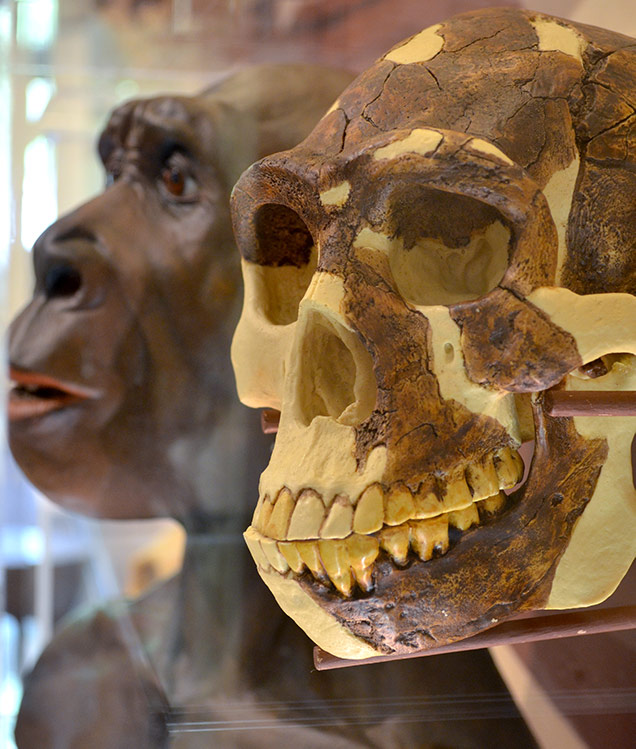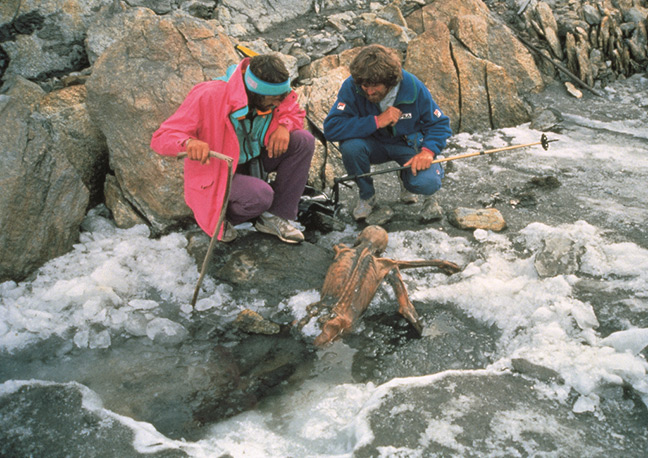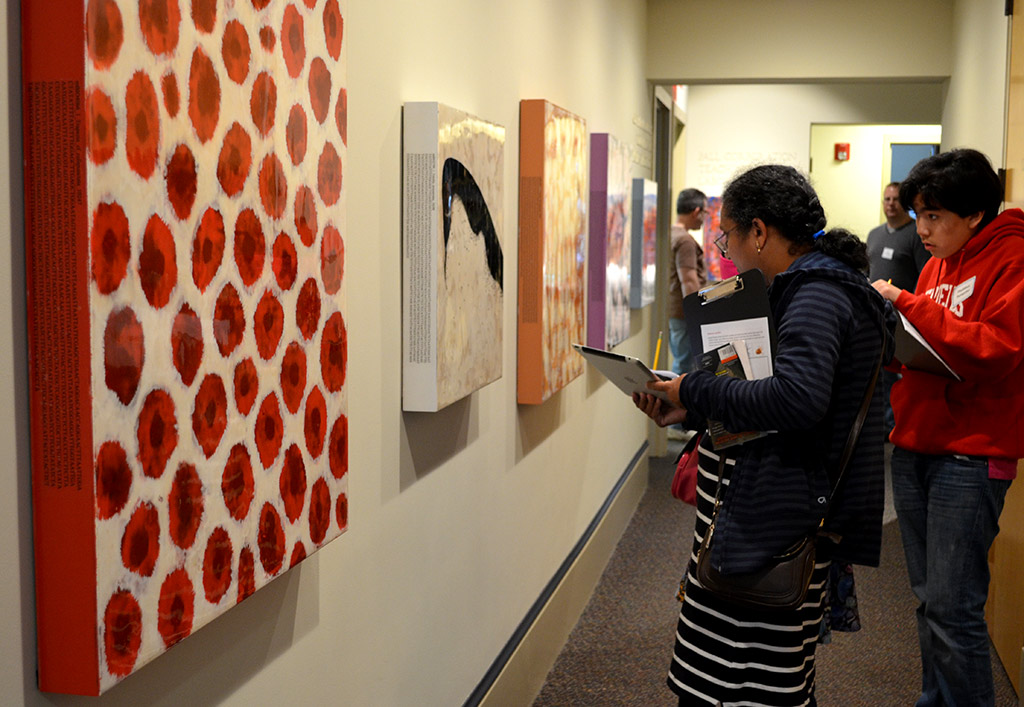
Dolan DNALC Exhibition
Our Human Inheritance featuring Ötzi the Iceman
Ötzi is the centerpiece of the Our Human Inheritance exhibition that highlights the humans evolution through a display of the skulls of our ancient ancestors and the first-ever recreation of a neanderthal skeleton. Visiting classes and the public hear Ötzi's story and find out what we have learned about Neolithic times from studying his body, clothing, and equipment during a scheduled guided tour.

Our Human Inheritance
We now feature Ötzi the Iceman and ancient human ancestors in the DNALC's main gallery space.
The rear gallery exhibitions feature:
- A timeline of the history of life on Earth highlighting key developments that have allowed life to flourish on our planet.
- The processes and outcomes of evolution are illustrated through several interesting stories, including on the evolution of the eye.
- A large touchscreen map of the human genome will facilitate investigation of “genome spots” related to human health and ancestry.
- A literal mirror will be held up to visitors at an interactive human traits wall, to explore human diversity and variation.

Image copyright Paul Hanny
Ötzi the Iceman
In the fall of 1991, two hikers in the Ötztal Alps came upon the mummified remains of a 5,300 year old man. Now preserved in a climate-controlled freezer at the South Tyrol Museum of Archaeology, Ötzi's body and accompanying artifacts provide a window into life in Europe during the Copper Age.
The mummy also provided a number of medical surprises. Although we think of Lyme disease as a new phenomenon that originated in Connecticut, Ötzi was infected with the Lyme disease microbe. His diet was filled with unprocessed, natural foods, yet he suffered from atherosclerosis. Most mysteriously, Ötzi died from an arrow shot to the back—his murderer had followed him up to the 10,200 foot pass where his body was found.
Making the Ötzi Sculpture
The DNALC worked with the South Tyrol Museum of Archaeology to make three 3D replicas of the Ötzi mummy; one is installed in the exhibit at the DNALC in Cold Spring Harbor, one housed at the South Tyrol Museum, and the other will be in the DNALC NYC at City Tech. These will be the only authorized replicas of Ötzi.
The Ötzi replicas were made by Gary Staab, the leading artist specializing in natural history and prehistoric life models for museums. The initial replica was made by large-scale 3D printing from a CT scan of the original Ötzi mummy. The 3D print was used to make a rubber mold, from which a durable resin cast was made. This was followed by weeks of finishing and painting, based upon an existing photographic atlas of Ötzi.
The process of creating the replica and installing it at the DNALC was documented to create a NOVA television special, Iceman Reborn, produced by Bsquared Media. The program premiered on February 17, 2016.

Art Exhibition: BOLD, the Barcode of Life
In the front and side halls of the DNALC is an art exhibition on DNA barcoding - BOLD (named for the acronym for the Barcode of Life Data Systems). Seattle-based artist, Joseph Rossano, partnered with biologists to engage the public around the science of DNA barcoding and how it is being used to catalog the world's vast and threatened biodiversity.
The work is inspired by specimens barcoded by Daniel Janzen from the Area de Concervación Guanacaste (ACG) in Costa Rica and by researchers for the UC Berkeley Moorea Biocode Project being carried out at the Richard B. Gump South Pacific Research Station in Moorea. All of the pieces deliberately represent the specimens as fuzzy, obscured, or out of scale, making it difficult to identify the organism. However, on closer inspection the viewer discovers that each piece includes the DNA barcode sequence and a link to the BOLD database, where the species identity is revealed. This underscores the reality that identifying species with certainty requires more than taxonomic methods. Our educators have developed interpretive activities for visiting students, many of whom take part in a barcoding laboratory during their visit.
Go to BOLD Exhibition WebsiteVisit the Museum
334 Main Street, Cold Spring Harbor, NY 11724 [Directions]
Hours
Monday through Friday, 10:00 am to 4:00 pm
Select Saturdays during Saturday DNA! Sessions
On weekdays, visitors are welcome to see the museum exhibit without a guide free-of-charge
during open hours, except during scheduled guided tours.
In addition, school and camp groups are often scheduled to explore the exhibit during our open hours,
especially between 11:00 am and 1:00 pm.
It is advisable to call ahead to learn if the exhibit is in use.
Class Field Trips
Please visit the Ötzi the Iceman Field Trips page for class trip options.
Combine a visit to the museum with a laboratory experiment!
Guided Tours
Reserved tickets are required for all guided tours; only ticket holders will be
admitted to the exhibit during scheduled tours. Tours are 1-hour long.
Group Tours
Have a troop of scouts, lead a science or history club, or organize a senior group?
Call 516-367-5170 to schedule a 1-hour guided tour for a group.
Cost is $8.50 per person and can be scheduled beginning at 10:00 am and concluding by 4:30 pm, weekdays.


